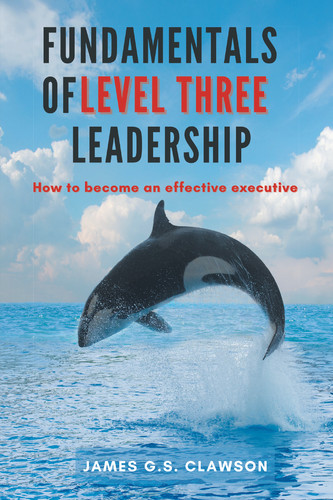126. Change Is Like Dying Little Deaths
Concept
Elizabeth Kubler-Ross (EKR) pioneered the study of near-death experiences. Her book, On Death and Dying, became a classic.22 In it, she outlined a series of steps or phases through which she had observed the dying to progress.
These phases were:
1. Denial. The person refuses to believe the impending diagnosis.
2. Anger. When forced to accept the diagnosis, anger sets in.
3. Bargaining. When the anger subsides, she said, people try to change the diagnosis by promising to do this or that if only they could live longer.
4. Depression. When it becomes clear that the diagnosis is not going to change, the emotional state turns to depression, a sad acknowledgment of the looming reality.
5. Acceptance. When the person realizes that the end is what it is and no behavioral or emotional reaction will change it, they move to accepting reality.
Progression through these phases could take considerable time. People could linger or even become stuck at one phase or another. The transitions were defined by the person’s behavior, not a pre-determined period.
EKR applied this model not only to the dying but also to those who had experienced a significant loss. A person losing a loved one or experiencing a divorce or even failing at business would go through these phases.
My reflection on the EKR model suggested some possible adjustments. First, denial is, I suppose, in reaction to some news, probably disconfirming data. The news might be, “You have cancer,” or “Your department is being sold off,” or “Your position is no longer needed,” or “I’m leaving you.” Once one gets some disturbing data, the EKR process can begin.
Once the person has progressed to depression or despair, it seems to me if they move on, they are going to try something different. That means experimentation. Experimentation with new thoughts, new emotions, and perhaps new behaviors. When one leaves depression and begins trying new things, the natural, related emotion is hope. Without hope, there is no experimentation.
The experimentation with thoughts, feelings, or behavior may lead to EKR’s acceptance, what we might call an integration with one’s view of one’s position in the world.23 Erik Erikson’s theory of dichotomous life phases ended with the dilemma between despair and integrity, the sense of things didn’t work out or whew, it all came together. It seems to me there’s an analogous structure here to EKR’s concept of acceptance.
Looking at the progression, it looked to me like a cascading pendulum between behavior and emotion. So, my adaptation of the EKR model looks like the one in the diagram below. People have diagramed EKR’s theory in different ways. One used two axes of energy and satisfaction to chart the progression.24 Another used a simple time line.25 To me, the five steps reflect an oscillation between behavior and emotion—denial leads to anger, bargaining to depression, and acceptance to peace.
Example
A manager’s division is sold off. He can’t believe it. He calls for confirmation. Then he rants, he screams, he throws things, he kicks the garbage can. Then he calls back and argues for a reversal if he promises to reduce expenses. When that is not granted, he goes home in a blue funk. His spouse tries to comfort him. Months later, managing the business for a new owner, he gradually forgets his disappointment at the hands of his former owner. Or not.
An elderly parent wants to stay in her home despite her declining health. Gradually, she is limited to a wheelchair because her legs are weakening. Then she breaks an ankle trying to do exercises on the handicapped bar in her hallway. Then a neighbor pushes her down the sidewalk and hits a curb launching her into midair on to the pavement, breaking both femurs. She refuses to stay in the rehab center, demanding to go home. She is so abusive to in-home care providers that they refuse to return. So she begins advertising for live-in help hoping to find a single nursing student who will live with her free of charge in return for helping with bathing, hygiene, and shopping. She invites a homeless person into her home. When he threatens her, she calls 911. She continues to advertise and interview itinerants trying to find a live-in nurse-aid.
Diagram

Source: Adapted from Elizabeth Kubler-Ross by © James G. Clawson
https://google.com/search?q=images+Elizabeth+Kubler-Ross&tbm=isch&ved=2ahUKEwiD6tSl0bzuAhVNNd8KHc0VDXkQ2-cCegQIABAA&oq=images+Elizabeth+Kubler-Ross&gs_lcp=-CgNpbWcQAzoCCAA6BggAEAgQHjoECCMQJzoFCAAQsQM6BAgAEB5Qj60HWNLtB2Df8AdoBnAAeACAAV2IAcgNkgECMjmYAQCgAQGqAQtnd3Mtd2l6LWltZ8ABAQ&sclient=img&ei=baIRYMP_Jc3q_AbNq7TIBw&bih=578&biw=1366&rlz=1C1GCEB_enUS910US910#imgrc=rT32z1ReTTJDnM
1. Reflect on a change you made in your life. How well does the EKR revised model match what you did and felt? Did you get stuck at any of the phases? Which and why?
2. Reflect on big changes you have seen others make. How well does the EKR revised model fit what they did and felt? Did they get stuck or bogged down at any of the phases?
3. Think about a change that was made in your organization. How well, if at all, does the revised EKR model describe what happened?
22 Kubler-Ross, E. 1969. On Death and Dying. Scribner.
23 I’m combining here with Erik Erikson’s notion of dichotomous dilemmas in his eight ages or stages of mankind. See Childhood and Society, W.W. Norton & Company, 1993, first edition 1950.
24 https://en.wikipedia.org/wiki/K%C3%BCbler-Ross_model#/media/File:K%C3%BCbler_Ross_grieving_curve.png
25 https://en.wikipedia.org/wiki/K%C3%BCbler-Ross_model#/media/File:K%C3%BCbler_Ross%27s_stages_of_grief.png
